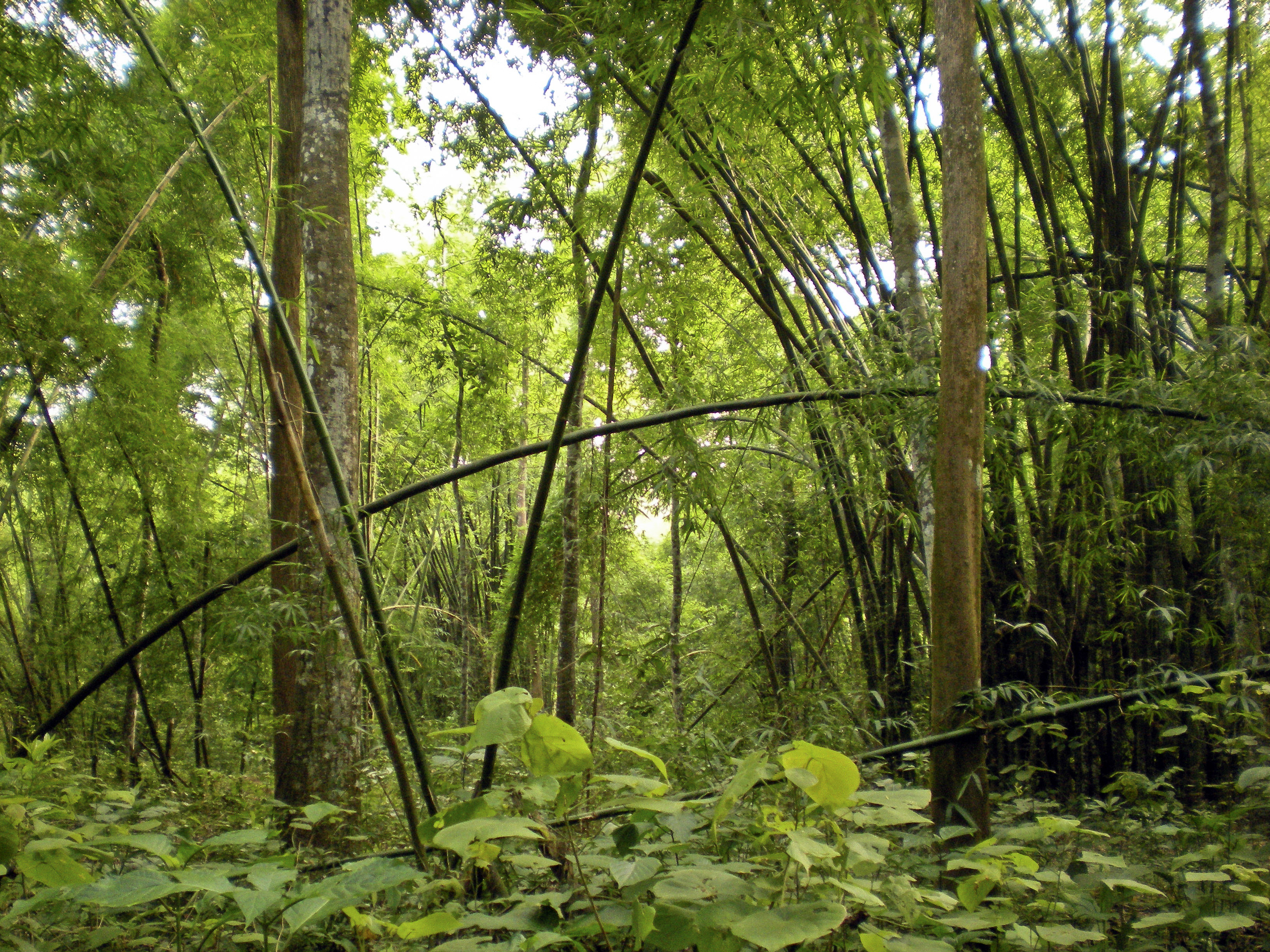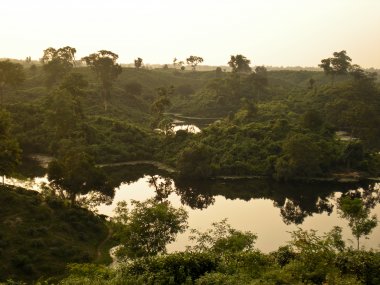Bangladesh is one of the most densely populated, highly polluted and poorest countries in the world—home to over 150 million inhabitants in a sweltering area smaller than the State of Iowa. The once mighty Buriganga River, which runs through the capital city of Dhaka, is so contaminated by industrial and human waste that it is biologically dead—a moving septic tank. Fish are merely a fable from the past and the river no longer supports even the most basic life forms. Faced with a steep day-to-day struggle to survive, the impoverished populace has little time to consider the natural world.

Yet all hope is not lost in Bangladesh. An environmental awakening of sorts is taking place centered in the Sylhet division, the northeast region of the country known primarily for tea production. A recently created government program Nishorgo has been active in a number of conservation projects, including the creation of Bangladesh’s first eco-cottages. There are seven small rustic huts, two of which are located halfway between the sleepy tea town of Sreemangal and Lawachara National Park, a dense 4,000-acre tropical forest teeming with life. Nishorgo has established a number of walking trails in the park and has trained local unemployed youth to serve as guides.
Lawachara is best visited in the morning, prime time for animal and bird watching. The jungle barrages the senses with heat and humidity, seemingly impenetrable vegetation, and the sounds of primates such as the endangered Hoolock Gibbons crashing through the trees overhead. Intimidating critters abound, including king cobras and giant orb spiders with webs strong enough to entangle birds (which they sometimes do). While hiking through the park, my guide and I were caught in a hellacious rainstorm unique to the monsoon in this part of the world—a window into the jungle in its true glory.
The green, rolling hills and tea plantations surrounding the park are scenic in their own right and also worthy of a visit. Great for a post-hike break is the Nilkantha Tea Cabin, famous for its five and seven layered tea drinks. The proprietor, Romash Rom Gour, has spent years perfecting the process of heating the teas to different temperatures and pouring them into carefully created layers based on density; impressively, the layers stay separated and distinguishable in taste. Romash has been asked to relocate to the big cities of the subcontinent but prefers to keep his old stand located alongside a dusty road in tea country. Also nearby is the Willy Wonka-esque Bangladesh Tea Research Institute, complete with fields of experimental tea strains and secret test laboratories. The high security in evidence is questionable but there is not doubt that they take their tea seriously.

Lawachara and the surrounding areas are a sliver of what used to be, but they represent a notable step forward environmentally. A nearby parcel of land is being considered for annexation, which would increase the amount of protected land significantly. The people also have begun to take notice—I met an enthusiastic group of ten who had taken the overnight bus from Dhaka just to spend a few hours in the park. They reveled in the serenity of Lawachara, for the first time making real the natural splendors of their country.
In addition to the Nishorgo projects, Bangladesh recently has enacted surprisingly progressive environmental policies. In 2002, it became the first country in the world to ban plastic bags outright, citing pollution from production and the infrastructural problems created by plastic waste. When the city of San Francisco voted in 2007 to become the first U.S. city to enforce such a ban, it cited Bangladesh and 30 remote Alaskan villages as models of success.
Bangladesh also has improved its air quality by converting many of its vehicles to compressed natural gas (CNG). Faced in 1997 with soot levels 10 times higher than the permitted guidelines of the World Health Organization, the government initiated an aggressive campaign against air pollution based on a widespread CNG program. Leaded gasoline was banned in 1999 and strict regulations were placed on sulfur content in diesel fuel. The heavily polluting two-stroke gasoline engine of the ubiquitous auto-rickshaw, alone responsible for 60 percent of all vehicle-related pollution, was banned altogether and auto-rickshaws were successfully converted to CNG or cleaner four-stroke engines. The results have been impressive: an estimated 200,000 of the 1 million vehicles on the road in Bangladesh are CNG-fueled, countless others are operating with cleaner running engines, and the city of Dhaka has seen a 40 percent drop in air pollution.
 Economics have driven many of the aforementioned measures as much or more than environmental concerns. Plastic bags were creating immense problems by clogging vital infrastructure, especially urban drainage systems critical during the monsoon season. The conversion to CNG has had major financial benefits, saving consumers money and making up for the cost of conversion in as little as a year. Bangladesh also is fortunate to be located on large natural gas reserves, which negates import costs and helps to make the CNG programs economically viable. Both measures have saved millions in health care expenditures.
Economics have driven many of the aforementioned measures as much or more than environmental concerns. Plastic bags were creating immense problems by clogging vital infrastructure, especially urban drainage systems critical during the monsoon season. The conversion to CNG has had major financial benefits, saving consumers money and making up for the cost of conversion in as little as a year. Bangladesh also is fortunate to be located on large natural gas reserves, which negates import costs and helps to make the CNG programs economically viable. Both measures have saved millions in health care expenditures.
Even with these measures, Bangladesh faces an environmental battle as formidable as anywhere in the world. The Buriganga River somehow remains the lifeblood of Dhaka but the toxic waters continue to worsen public health and will not support the city’s inhabitants for much longer. Yet an environmental consciousness is emerging that transcends economic theory and is a topic from the streets of Dhaka to the jungles of Lawachara. If it can happen there, it can happen anywhere.
